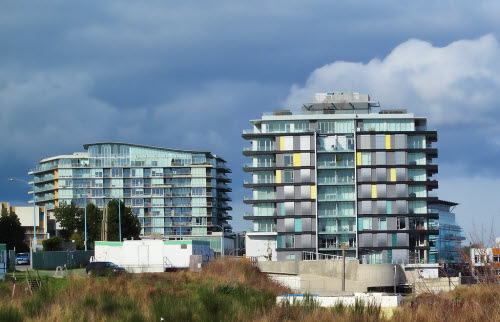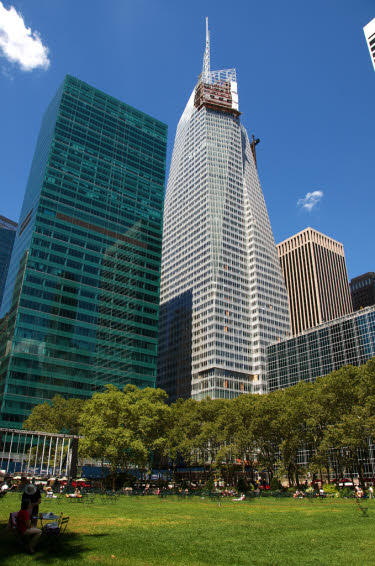The race to go green has driven the construction of several enormous projects around the world. Some have failed, while others have been resounding successes. While some people have made changes in their own lives to go green, such as driving more fuel efficient cars and switching to organic produce delivery, these ambitious green buildings are on a scale that could change the lives of perhaps hundreds of thousands.
Dockside Green, Victoria, B.C., Canada
Flickr user rpaterso
There’s a lot to live up to when an article from The Atlantic is titled “Is This the World’s Greenest Neighborhood?”
And the answer just might be ‘yes.’ I’m talking about Dockside Green in Victoria, British Columbia. Besides earning a platinum rating under LEED Neighborhood Development, Dockside Green is home to a biomass gasification plant, on-building windmills and solar panels that makes the development carbon-neutral. Moreover, the community (still being built) includes its own sewage treatment and greywater recycling facilities.
Bosco Verticale vertical forest
Construction has already begun on a pair of skyscrapers in Milan, Italy that will feature a global first: a vertical forest.
Each of the 65 apartments’ balconies is designed to hold around 900 small trees. Architect Stefano Boeri also says the skyscrapers will cost just 5 percent more than normal high rises. Still, there are concerns that the energy required to support the weight of the trees and soil may mute its sustainability efforts.
Bank of America Tower, New York City
Flickr user Ed Yourdon
This $1.1 billion, 2.2 million-square foot tower was the first U.S. skyscraper to achieve a Platinum LEED certification. Here’s a list of just some of the green bells and whistles it features:
- Floor-to-ceiling insulating glass
- Automatic daylight dimming system
- Greywater system
- Waterless urinals
What are some of your favorite green buildings and projects? Let me know in the comments.
This post was written by Bryden McGrath, a freelance journalist and photographer, intern, and recent college graduate from Seattle.



Killian
Do any of these buildings include the embedded energy of the building materials and the energy required to build it? Do they include non-renewable and/or non-recycled/non-reused materials?
If so, they aren’t sustainable, thus are not green, but merely more efficient than most. We need to get serious about calling out pseudo-sustainability. I hope these buildings do include these considerations, but doubt it.
T. Caine
Killian,
To ease some of your fears, I can certainly assure you that One Bryant Park pursues numerous measures to pursue a sustainable realization. The building is designed by Cook+Fox Architects, a firm I had the pleasure for working for. The four green tags that Bryden highlighted about the building are accurate, but far from the entirety of the list. quickly, some other bullet points include:
– OBP collects every drop of rainwater that falls on the site: 329,000 gallons, used for irrigation, flushing toilets and cooling tower make-up.
– Has an on-site 4.6 MW natural gas fired co-generation turbine, that provides energy much more efficiently than the grid
– On site 44 ice-storage tanks that utilize energy at night to cool the building through the day
– remotes 95% of particulates from the air so that the air exhausted from the building is cleaner than the air coming in
– The building contains 35% recycled material content and it diverted 83% of construction waste from landfills
I can’t speak to the other two porjects, but OBP is the real deal. If you are interested in the full backstory:
http://progressivetimes.wordpress.com/2009/05/14/green-buildings-one-bryant-park/